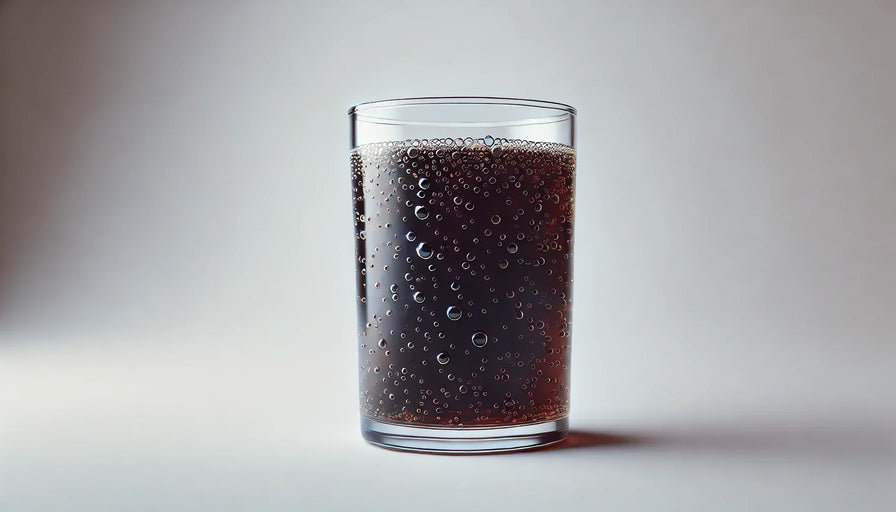
The Origin of Tonic Water

When was tonic water invented?
Tonic water was invented in the early 19th century by British soldiers stationed in colonial India. It was officially patented by Erasmus Bond, owner of Pitt & Co. in Islington, London by 1858.
Tonic water, often regarded as a quintessential mixer for cocktails, has a rich history, much like the history of sparkling water, intertwined with colonialism and medicinal practices.
Originally developed for its health benefits, tonic water's distinct bitter taste, and bubbly nature have evolved it into a popular beverage choice around the world.
This article explores the fascinating journey of tonic water from its medicinal origins to its contemporary status in the realm of mixology.
Table of contents

Tonic water in the 19th century
In the 19th century, tonic water not only served as a refreshing beverage but also played a crucial role in combatting malaria among British soldiers in India. To make the bitter taste of quinine more palatable, soldiers would mix it with water and sugar.
This mixture of water and sugar paved the way for the modernization of tonic water as we know it today.
Related read: The History of Soda Drinks
What is tonic water made of?
Tonic water is primarily made of three key ingredients:
- Carbonated water
- Sugar (or sweeteners)
- Quinine
Quinine is the key ingredient that gives tonic water its distinct bitter taste. Tonic water typically contains a calorie count of 130 to 180 calories per bottle, depending on the brand and serving size.
Tonic water also contains other minerals for shelf life such as citric acid, sodium bicarbonate, and potassium sorbate.
Related read: When Was Carbonated Water Invented?

Tonic water patent
Tonic water was patented in 1858 by Erasmus Bond, who was the owner of Pitt & Co., a beverage company based in Islington, London. The patent marked a significant advancement in the commercial production of tonic water, which had been used by British soldiers for medicinal purposes.
Bond's innovation not only solidified the creation of a more palatable version of this quinine-infused drink but also laid the groundwork for its widespread popularity. This patent brought tonic water into the realm of commercial beverages, paving the way for its evolution and incorporation into modern cocktails, most notably the classic gin and tonic.
By securing the patent, Bond ensured that his formulation would have legal protection, allowing him to capitalize on the growing demand for tonic water among consumers seeking both refreshments and health benefits.
Related read: When Was Bottled Water Invented?

Where does quinine come from?
The quinine in tonic water comes from the bark of the cinchona tree, a native plant found in South America. This bark was traditionally used by indigenous people to treat malaria as it contains antimalarial properties.
The isolation of quinine from cinchona bark during the 19th century revolutionized the fight against this deadly disease, making it one of the first effective anti-malarial drugs. Beyond malaria, quinine has been used to treat various conditions, including leg cramps and certain types of arrhythmias.
Despite its beneficial properties, quinine must be used carefully, as it can cause side effects in some individuals. These can include nausea, dizziness, and in rare cases, more severe reactions such as tinnitus or visual disturbances.
As a result, modern formulations of tonic water typically contain significantly lower concentrations of quinine compared to therapeutic doses, allowing for its enjoyment as a refreshing beverage while still retaining a hint of its medicinal heritage. The FDA considers it safe as long as it's less than 83 parts per million (ppm).
Related read: When Was Club Soda Invented?

Common FAQs about tonic water
What is the shelf life of tonic water?
The shelf life of tonic water largely depends on whether the bottle or can has been opened. Unopened tonic water typically has a shelf life of about one year from the date of production, as long as it is stored in a cool, dry place away from direct sunlight.
Once opened, tonic water should be refrigerated and consumed within one to two weeks for the best taste and carbonation quality. Always check the expiration date provided by the manufacturer for the most accurate guidance.
What is tonic water good for?
Tonic water is primarily known for its refreshing taste and its role as a mixer in cocktails, particularly in the classic gin and tonic. However, quinine, a key ingredient, has health benefits as well.
Historically, tonic water was used to prevent malaria due to the antimalarial properties of quinine, though it is no longer recommended for this purpose due to the low concentrations found in modern tonic water.
Additionally, some people find that tonic water can help alleviate leg cramps, as quinine was traditionally used for this purpose.
Nonetheless, the potential benefits should be approached with caution, as quinine can cause side effects in certain individuals and a large amount of sugar content per serving size–typically around 33 grams.
Overall, tonic water is enjoyed mostly for its unique flavor and carbonated refreshment rather than for any medicinal effects.

Can I make my own tonic water?
Yes, you can make your own tonic water at home. However, the process can be intricate, requiring various ingredients and equipment, such as cinchona bark, citric acid, and a siphon or soda maker. It is crucial to measure the quinine in your recipe precisely to ensure it remains within safe consumption limits.
Always follow a reliable recipe and consider consulting a medical professional before attempting to create homemade tonic water.
What does tonic water taste like?
Tonic water has a distinct and unique flavor profile, primarily characterized by its refreshing bitterness from quinine. The bitterness is balanced by sweetness from added sugars or sweeteners, creating a complex taste that is both invigorating and mildly sour due to the presence of citric acid.
Related read: Who Invented Soda Water?
Summary
Tonic water, invented in the early 19th century by British soldiers in India, serves as both a refreshing beverage and a mixer in cocktails, particularly gin and tonic.
Its key ingredient, quinine, derived from the cinchona tree, provides the drink's distinctive bitter taste while also possessing historical medicinal properties. Although it was initially used to combat malaria, modern tonic water contains lower concentrations of quinine, making it safe for casual consumption.
Despite its sugar content, tonic water is mainly enjoyed for its unique flavor rather than its health benefits. The invention of tonic water marked a significant evolution in the beverage industry, leading to its widespread popularity today.
Recommended reading

How to Give Back During Thanksgiving 2025
Key takeaways Thanksgiving is a time to express gratitude and share with those in need. From volunteering at local shelters to donating food and essentials, there are numerous ways to give back to...

What Does Carbonation Do to Your Body?
What does carbonation do to your body? Carbonation alone typically has minimal effects; however, it can cause bloating and discomfort for some, and it may worsen acid reflux due to carbon dioxide ...

What Are the Health Benefits of Sparkling Water?
Summary Sparkling water isn't just a refreshing drink—it comes with surprising health benefits too. From aiding digestion to improving hydration, discover how sparkling water can be a healthy addi...